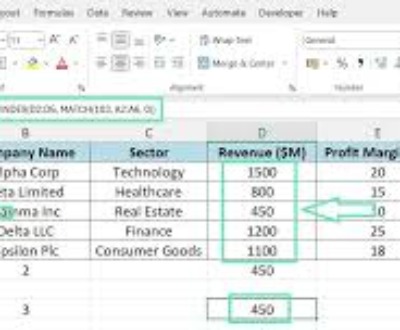What is a buyer persona?
Buyer persona definition and examples

Understanding the unique demands and preferences of your target market is essential to attaining your business objectives. So how exactly do we do that? By putting together buyer personas, a thorough, mostly fictional picture of our ideal target clients. Buyer personas are immensely helpful marketing tools that may assist you in customizing your offerings and messaging to meet the unique needs of your target customer.
Ideally, we know our customers as well as our family members and close friends, and we treat them as such. In today’s world, people absolutely expect companies to deliver information, services, and experiences that are catered specifically to them.
Personas are essential to every organization, so if you're not using them (properly or otherwise), it's time to get started. You'll discover what a buyer persona is in this guide, and we'll walk you through the essential elements of developing your own in just six easy steps.
Buyer personas: everything you need to know
1. What is a buyer persona?
A buyer persona is a made-up somebody who stands in for your ideal client. In order to focus on quality leads rather than waste time with a broad audience, using buyer personas will help you get a far deeper understanding of client behaviour. A buyer persona, however, typically represents a far larger composite of your target client than a user persona because it frequently comprises a broad spectrum of users from your customer's organization (marketing, IT specialists, etc.).
2. The origin of buyer personas
American software designer and engineer Alan Cooper created the concept of using personas in the early ’80s. He would continue to refine the concept throughout the next decade. Cooper formally introduced the idea to the public in 1998, with his book The Inmates Are Running the Asylum: Why High-Tech Products Drive Us Crazy and How to Restore the Sanity—but it was in 1983, during several fateful walks around the golf course near his home in Monterey, California, that the concept of personas began to take shape.
At the time, Cooper was designing a critical-path project management program (dubbed Plan*It), and the idea of interfacing with software was new or non-existent in our culture. Cooper had a lightbulb moment when he realized he needed to employ role-playing tactics to represent the users of his program, similar to what Method actor Daniel Day-Lewis might do for his upcoming movie. This would allow him to put these users first — to truly decipher what their needs were and see what was necessary or unnecessary about his creation.
To make sure he was posing (and responding to) the proper inquiries and assessing the entire design process from the viewpoint of his audience, Cooper would go on to conduct a variety of interviews with the people who were supposed to be the target market for Plan*It. Thus, the idea of personalities was created.
3. Why are buyer personas important for your business?
Buyer personas can help you for several reasons:
- Understand customers and prospective customers on a deep level
- Creating buyer personas can help to unify and strengthen the entire company and make sure that everyone is targeting the same specific niche
- Make sure that all marketing activities are geared towards your target audience
- Ability to customize product development to your target consumer
- More precisely targeted social media campaigns and ads
- Craft targeted content
- Build brand loyalty and long-lasting trust
Let's take the example of developing a new app for food delivery. A lot of information regarding the factors that influence a particular type of person's purchasing choices must be included in your consumer persona. Here is how it might appear: A millennial lady in her mid-30s named Judith wants to eat more healthily, although she doesn't have a lot of extra time to cook, more vegetarian-based meals. She usually looks for quick, simple meals on Instagram and also consults YouTube influencer ideas.
By outlining "Helen's" shopping habits, including where and how she does her research for recipes, the company can then formulate a marketing plan that incorporates this information — thereby enticing a bigger audience to buy the product.
4. Buyer persona vs. user persona
User personas and buyer personas are tools that assist product developers, marketing strategists, and other corporate personnel in imagining and comprehending their target consumers.
However, there are two primary differences between the two: A user persona is a tool to help companies better empathize with their target customer, but a buyer persona is a tool to help companies better understand the motivations of the people who will actually be buying the product. Given that a team of decision-makers from all backgrounds (managers, supervisors, etc.) are typically the ones who determine whether or not to acquire a product, buyer personas tend to be larger and more complex.
Here's another way to think about it: The buyer persona might not always be utilizing your product(s), whereas a user persona would. This is one of the key distinctions between buyer and user personas. For example, a parent is considering buying a new bike for their child. Who will ride the bike, the child or the parent? Since the child is obviously the user, we can consider the child to be the user persona and the parent to be the buyer persona for our purposes.
As both the child and the parent obviously have distinct objectives and goals, creating both sorts of personas is crucial when establishing your marketing strategy and products.
5. How to create buyer personas
Here are the 6 simple steps you must follow to create a detailed buyer persona:
- Start by answering some key generic questions
- What are the age, gender, and socioeconomic status of your possible target audience?
- What are the objectives and passions of the user?
- Where is the user getting information about products and services that are similar to yours?
- How much time does the user spend online, and through what tech device are they accessing the internet?
- Which social media platforms does the person use?
- What are the needs of your user? their challenges? desires? motivations?
2. Explore your current customer base to find people who’ve engaged with your product. (But, don’t just talk to people who wholeheartedly love your product; customers who are unhappy for a common reason will also help you understand and flesh out your personas)
3. Conduct one-on-one interviews with an adequate number of people (using your contacts database)
4. Organize people into groups depending on how they responded similarly.
5. Organize the information you’ve gathered into a buyer persona template, and include the following:
- A fictional name and a photo
- Basic demographic information: age, gender, economic background, communication preferences (anything you’d learn on a dating profile, basically)
- Interests
- Behavioural traits
- Primary and secondary goals and challenges
- Buying patterns
- Real “quotes” from your persona, based on the info you’ve gathered
- Common objections, i.e. reasons they might not buy your product
- Pain/frustration points
6. Repeat the process. (It’s important to create more than one persona; after all, different people may buy your product for different reasons)
Conclusion
At the most fundamental level, constructing buyer personas over time, or simply placing ourselves in the user's shoes, enables us to craft content that resonates with the target audience and produce goods and experiences for our clients that are tailored to their unique requirements and preferences.
As a business, it's crucial to look within rather than making the usual error of looking outward. By concentrating on the requirements, wants, and pain points of our potential customers, we can better personalize our products, messages, and tactics.
The bottom line? Humanizing our audience by creating and developing buyer personas will lead to a brighter, better future for the entire company.
Swift Web Design
We are a digital marketing company with a focus on helping our customers achieve great results across several key areas.
Request a free quote
We offer professional SEO services that help websites increase their organic search score drastically in order to compete for the highest rankings even when it comes to highly competitive keywords.








